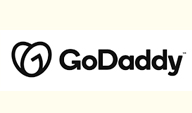Now if you have no prior knowledge of C++, rest assured that it’s not as hard as people say. Here are four tips that can bring you from a novice level to pretty much wherever your efforts take you.
Digest the basics. You need to build a solid foundation in programming. Whether it’s data structures, algorithms, or plain code, you need to be able to understand the content ahead of you.
Don’t be intimidated to start a new course. You can find the best C++ tutorials and courses on the internet over diverse platforms. Don’t be afraid to start a course.
Learn by practice. This is the most important thing of all. You can go ahead and binge-watch all courses on c++, but unless you start working with your own hands you won’t get anything done. Websites like Codeforces and Code Academy are there to help you get to the next level.
Ask an expert, don’t be shy. There’s no shame in asking someone with experience, the community is huge, and you can easily find someone to help you. Hackpledge is an amazing website for the job.
How Is It Developed?
Now, how can you become a blockchain developer? It might seem like rocket science, but it really isn’t. First, you need to understand the ideas underlying the security. Remember that security is of the essence here, otherwise, people would go around messing up the ledger as they please. In blockchain, you don’t rely on usernames and passwords for security. Blockchain uses encryption technology as the security method. So you need to get familiar with keywords like hash functions, public keys, and private keys, etc…
Like anything in the digital world, blockchains are developed using certain general purpose programming languages. Something like Go, C, C++, Java or Python. The bitcoin’s source code was written in C++ so let’s focus on it.
There are certain criteria that have to be met in a blockchain code.
First of all, your blockchain has to be a fortress. Since the code is open source and the public for everyone to see, anyone can identify the bugs and the vulnerabilities lying in the code. Such exploits might cost millions of dollars at a time. Despite the fact security is a major issue, it’s not the only one. There’s the topic of isolation and efficient resource management, and of course the performance. However, for the sake of simplicity, we will not dive too deep into these topics. C++, in fact, does meet a lot of these harsh requirements, which makes it an ideal candidate for the job. C++ allows for an extra degree of freedom in what it can do, with the memory management, but it comes at a price. Degrees of freedoms are usually degrees of responsibilities as well.
For the sake of demonstration, let’s build our own blockchain here. We’ll demonstrate the concepts in Javascript for simplicity but we’ll also show the equivalent C++ code.
.png)










The SSL certificate acts as a “handshake” between communicating browsers. It shows your customers that your website is current and not a fake rendition looking to scam or bilk the customer out of payments. Look for the “S” after the “http” in the web address line. Also, there is a small “lock” image on the same line.